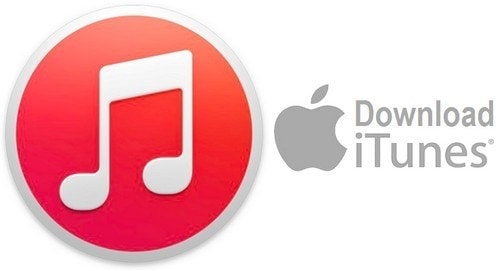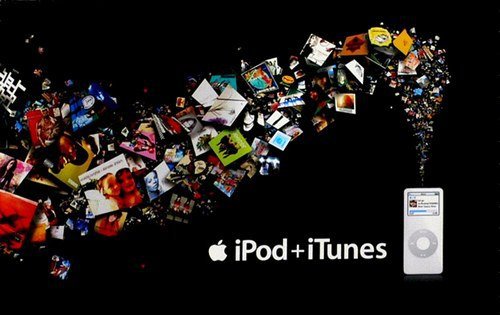The Marketing mix of iTunes analyses the 4Ps of iTunes, including the Product, Price, Place, and Promotions. iTunes is a part and parcel of its parent company, Apple Inc. It is a software product associated with the media and entertainment industry. The company has targeted youth and college students as its potential customers. iTunes was initially released in 2001, and its latest version in 2016 on September 13. It is an application that helps provide entertainment anytime and anywhere. Some of its main competitors are as follows-
- Rhapsody MP3
- com
- Amazon MP3
About iTunes
- Type: Digital media player, media library, mobile device management utility, and the client app for the iTunes Store.
- Industry: Consumer electronics, software, and digital media
- Founded: January 9, 2001
- Founders: Steve Jobs, Bill Gates, and Steve Wozniak
- Headquarters: Cupertino, California, United States
- Area served: Worldwide
- Key people: Tim Cook (Chairman) and Eddy Cue (CEO)
- Number of employees: 164,000+
Table of Contents
iTunes Product Strategy
iTunes is a user-friendly and multi-purpose application trusted and supported by many platforms. It is a management application for mobile devices, online radio broadcasters, media libraries, online stores, and a media player developed by its owner company, Apple.
It organizes, downloads, and plays digital video and music downloads on personal computer operating systems like Microsoft Windows and MacOS. iTunes has a perfect song selection and includes some that are not readily available in retail stores anymore. It has created a virtual library for keeping track of various songs.
It also allows a logged-in user to gain access to a song. One can easily download and purchase several items from the iTunes Store, like podcasts, audiobooks, television shows, music videos, music, movie rentals, movies, and ringtones. iTunes has covered a long distance from its first version, iTunes 1.0, released in 2001, to its latest version, iTunes 12.5.
The new Product Mix of iTunes in 2023 is as follows (Source).
- Music: iTunes originally started as a digital platform for music. Users can purchase and download individual songs or entire albums from a vast music collection across various genres and artists.
- Movies and TV Shows: Users can purchase or rent various movies. The platform offers content from major studios and networks, catering to diverse tastes and preferences.
- Books: iTunes provides a selection of e-books and audiobooks, ranging from bestsellers and classic literature to new releases and educational materials.
- Podcasts: iTunes includes a substantial library of podcasts covering various topics such as news, entertainment, education, and more, available for free download and streaming.
- Apps and Games: While initially part of iTunes, the management of apps and games for iOS devices has shifted mainly to the App Store. However, users can still use iTunes to back up and manage their app and game data.
- iTunes U: This educational content platform offers lectures, videos, books, and other resources from leading educational institutions. It’s a valuable resource for students and lifelong learners.
- iTunes Gift Cards: These are a popular product offering that allows users to gift store credit that can be used to purchase any content within the iTunes ecosystem.
- iTunes Match: A subscription service that allows users to match and upload their music library to the cloud, making it accessible on all their devices.
- Apple Music Integration: Although Apple Music is a separate streaming service, it integrates closely with iTunes, providing users access to a vast library of songs, playlists, and radio stations through a subscription model.
- iCloud Integration: iTunes allows users to store and access purchased content across all their Apple devices.
iTunes Place Strategy
Apple Inc. is a global brand, a multinational technology company with an international presence spread over innumerable cities worldwide. It sells its products via a strong distribution channel that includes the services of distributors and developers for its various apps. iTunes has been written in C++ and is available in twenty-three languages. The first version, iTunes 1.0, was released in 2001 at Macworld in San Francisco.
Its version is applicable for Windows 7 or later and for Mac OS X v10.9.5. iTunes is accessible on iPod Touch, iPad, and iPhone, and through these products, it can easily reach the masses. Apple products are available at its retail outlets and via its website and mobile. Thus, a strong distribution network is set up that helps reach products and services to different places and, ultimately, individuals.
Here’s the place strategy of iTunes.
- Global Online Presence: iTunes is primarily an online platform, accessible globally through Apple’s website and the iTunes application. This digital presence allows users worldwide to access its content, making it universally available.
- Integration with Apple Devices: iTunes is seamlessly integrated into Apple’s ecosystem, being a native application on iPhones, iPads, Mac computers, and iPods. This integration ensures that Apple device users have immediate and convenient access to iTunes content.
- Availability on Windows and Other Platforms: Besides Apple devices, iTunes is also available on Windows, allowing users of non-Apple desktops and laptops to access the platform. This broadens its reach beyond just Apple users.
- iTunes Store in Apple’s App Store: For mobile users, particularly on iOS, the iTunes Store is accessible through the Apple App Store. This provides a unified experience for users purchasing music, movies, and other digital content.
- Cloud-Based Accessibility with iCloud Integration: With iCloud integration, users can access their purchased iTunes content across all devices. This cloud-based approach means that users can enjoy their content anywhere without needing physical storage or multiple downloads.
iTunes Pricing Strategy
iTunes is freeware, and its developer determines the price of its app, which can amount to 99 cents or a dollar or even be free of cost. At its inception, individual songs at the iTunes store were sold at a similar price range, but in 2007, Apple adopted the multiple-price format. Originally, songs at Apple stores were at 128 kbit/s, but in 2009, Apple announced a higher rate of 256 kbit/s. iTunes Store offers apps, some of which are free, whereas others cost money.
When a person downloads an app, 30% goes as revenues to Apple and the rest 70% to its developer. Another way of earning revenue is through sales channels, such as renting movies via the iTunes Store. Apple has adopted a Skimming pricing policy for several apps and services to earn a competitive advantage over rival companies and ultimately garner enormous profits for its premium products.
Here’s the pricing strategy of iTunes.
- Competitive Pricing for Digital Media: iTunes employs competitive pricing for its vast digital media library, including music, movies, and TV shows. Prices are set to be competitive with other digital media stores and streaming services, aiming to attract and retain customers in a highly competitive market.
- Variable Pricing for Music and Videos: iTunes uses variable music and video content pricing. Popular songs, new releases, and premium video content often have higher prices, while older or less popular items may be priced lower. This strategy allows for flexibility and caters to a wide range of consumer preferences and willingness to pay.
- Premium Pricing for Latest Releases: iTunes often adopts a premium pricing strategy for the latest movie and TV show releases, especially for rentals and purchases. This aligns with the high demand for new content and the value placed on immediate access by consumers.
- Subscription Pricing for iTunes Match and Apple Music: iTunes Match and the integrated Apple Music service offer subscription-based pricing. This model provides continuous revenue and caters to users seeking extensive music libraries and services beyond traditional purchases.
- Promotional Pricing and Bundles: iTunes periodically offers promotional pricing, discounts, and bundled deals, especially during holidays or special events. This strategy helps attract new users, encourage more purchases, and retain existing customers.
- Tiered Pricing for Different Markets: iTunes employs tiered pricing to recognize the diverse economic conditions across global markets. This means prices are adjusted for different countries and regions, ensuring affordability and market relevance.
iTunes Promotion Strategy
Promotion is an integral part of Apple Inc. as it realizes that the proper visibility and positive awareness will take its brand very far. The company has targeted mainly youth for iTunes and has launched several incentives to attract their attention. iTunes has positioned itself as a trusted Mac app store that guarantees entertainment to its users.
It has several promotional schemes to draw customers and maintain their loyalty. It has a weekly promotion where a logged-in user can download one to three songs for free. Sometimes, free downloading is also possible for new customers with sudden incentives on certain days. Apple marketing also has taken the help of print media, and its latest and informative campaigns are displayed at popular places to gain maximum coverage. Apple has an official website that provides the latest information to interested customers. Apple also promotes its apps and products via social media platforms.
Some Recent Video ads and Print ads for iTunes are:
Liked this post? Check out the complete series on Marketing Mix

